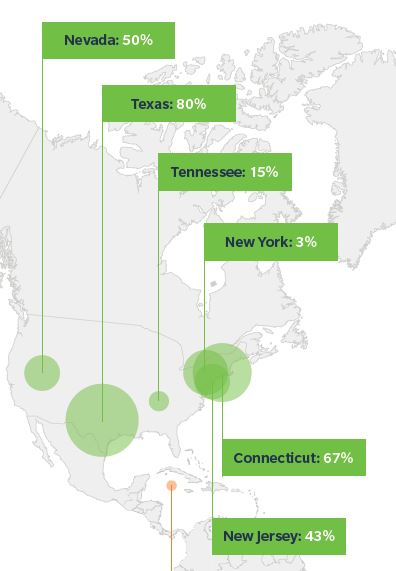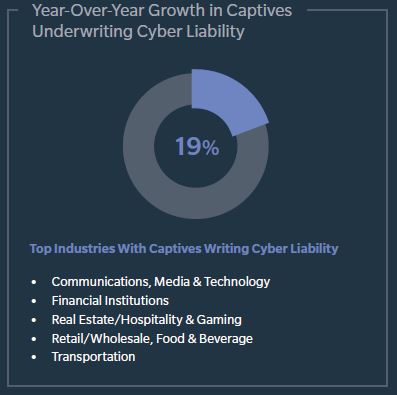On February 15, a massive and unseasonal storm with frigid temperatures spiked the demand for power and outpaced the supply, severing power to 26 million Texans. Unpredictable weather patterns present risks for business owners, but also create an opportunity to improve their risk mitigation strategies to address future uncertainties.
Power outages are not caused by storms alone. Heat waves, hurricanes and wildfires can also create power outages—and outages are more common than business leaders may think. S&C’s 2018 Commercial and Industrial Power Reliability Report found that one in four businesses experience at least one power outage per month. The Department of Energy estimates that these outages cost companies $150 million per year. Although companies may face spoilage-related losses, data centers often experience the most severe consequences. When a data center goes down, it can impact a business’s most vital proprietary assets. According to a Ponemon Institute study, the cost of an unplanned data center outage is $5,600 per minute with an average recovery time of 119 minutes resulting in a loss over $690,000.
The cost for businesses goes beyond damage. Litigation tends to run rampant, and with the recent Texas power outages, businesses are already facing lawsuits. The family of an 11-year-old boy who died of hypothermia is suing energy company Entergy and grid operator Electric Reliability Company of Texas. Multiple wrongful death lawsuits are predicted from incidents including carbon monoxide poisonings, house fires and shelter closings.
A range of insurance options can help businesses protect themselves from complex, evolving and completely unpredictable risks such as natural disasters and climate change.
Property insurance protects the building and physical assets like equipment, supplies, inventory, fixtures and computers. However, property insurance may not provide all the coverage needed. Exclusions like floods, sink holes, earthquakes, terror incidents, and chemical, nuclear, biological and environmental events are likely not covered. An unexpected policy exclusion can be devastating and result in a claim being denied, leaving business owners and leaders feeling helpless and infuriated.
Business interruption insurance is helpful but may not be enough. Typically, when damage obstructs business operations, it is covered by property insurance, and business interruption insurance covers losses from interruption. However, a natural disaster can create a perfect storm, so to speak. For example, if an establishment is forced to close due to lack of power, there can be a denial of claims. Business owners may be able to have property repaired, but cannot recoup the lost revenue through insurance.
Another option for businesses is to choose captive insurance and own their own insurance company. This establishes a more robust approach to risk management, and enables the business or business owner to own a profitable second business. This can help lower commercial insurance costs, build up assets and loss reserves, enhance critically needed cash flow and liquidity, and help prevent losses from hollowing out the total business entity. Importantly, successful captive insurance companies are filled with liquid assets that back the reserves for potential future losses, owned by the business or business owner. Liquid assets are often more desirable than durable assets that depreciate and may be difficult to sell. Finally, a captive insurance company is a regulated entity.
A captive primarily insures its parent company or related companies, so the parent company can purchase insurance from its wholly owned captive. Such purchases may replace all, or a portion, of its commercial insurance. Additionally, risks that are unable to be insured, are cost prohibitive, or are underinsured in the commercial insurance market can be placed in the captive insurance company. The captive can also insure gaps in third-party commercial insurance policies.
Benefits of Captives in Natural Disasters
While businesses with claims for property insurance or business interruption coverage are denied, a business with a captive insurance company would not face exclusions that leave them vulnerable. Since a captive insurance policy can be written to be broad and robust, it has more triggers than third-party commercial insurance, sos an event may covered where business interruption might not provide coverage.
Captive insurance also serves as a valuable financial strategy. When captives build up loss reserves, backed by corresponding assets, those assets are available for dealing with a catastrophic event. When a business has to restart or relocate their operations, assets are readily available to help it navigate the challenges and pursue big changes. The business owner can use the asset buildup in successfully managed captive insurance companies to help grow the business by funding acquisitions, growth strategies and enhanced risk mitigation strategies via a dividend from the captive insurance company to the business owner.
Before another crisis strikes, businesses should review insurance policies, determine whether current policies offer adequate coverage, and determine if a captive will help them face the next worst-case scenario.

 As organizations’ exposures increase in number, complexity and severity, shareholder funds generated by captives are becoming more important. According to Marsh:
As organizations’ exposures increase in number, complexity and severity, shareholder funds generated by captives are becoming more important. According to Marsh: “We expect to see a continued increase, driven in part by companies that are already strong captive users and by those that may have difficulty insuring their professional liability risks,” Marsh said.
“We expect to see a continued increase, driven in part by companies that are already strong captive users and by those that may have difficulty insuring their professional liability risks,” Marsh said.